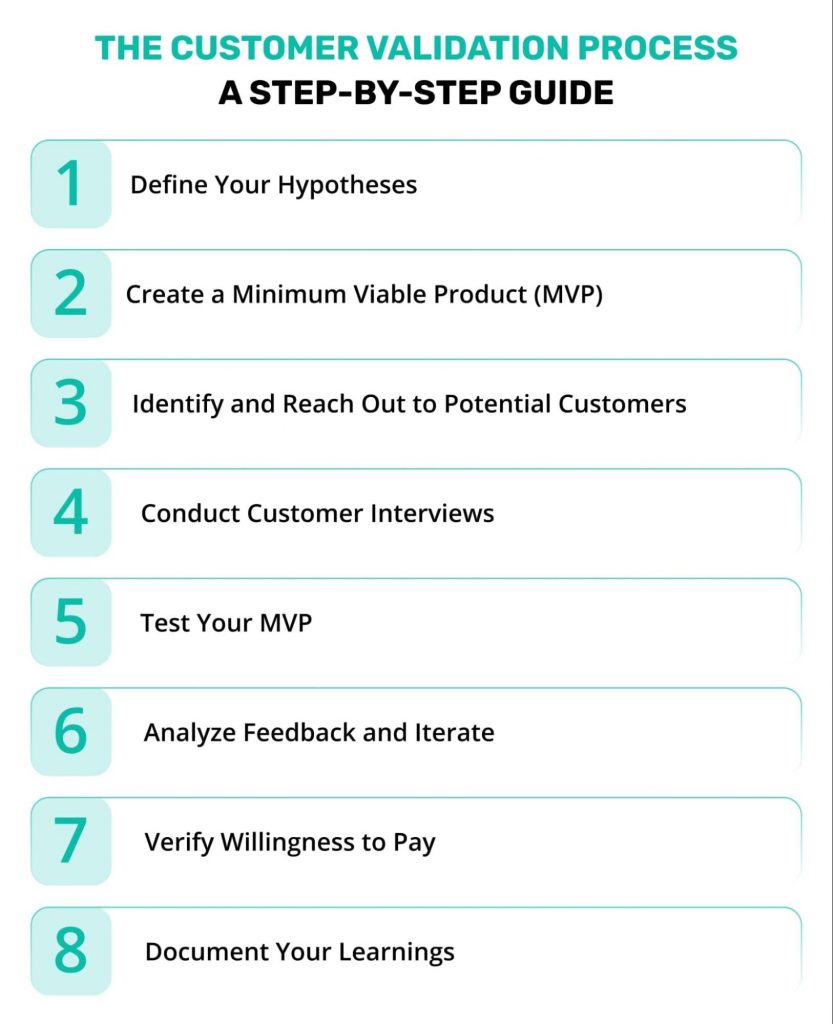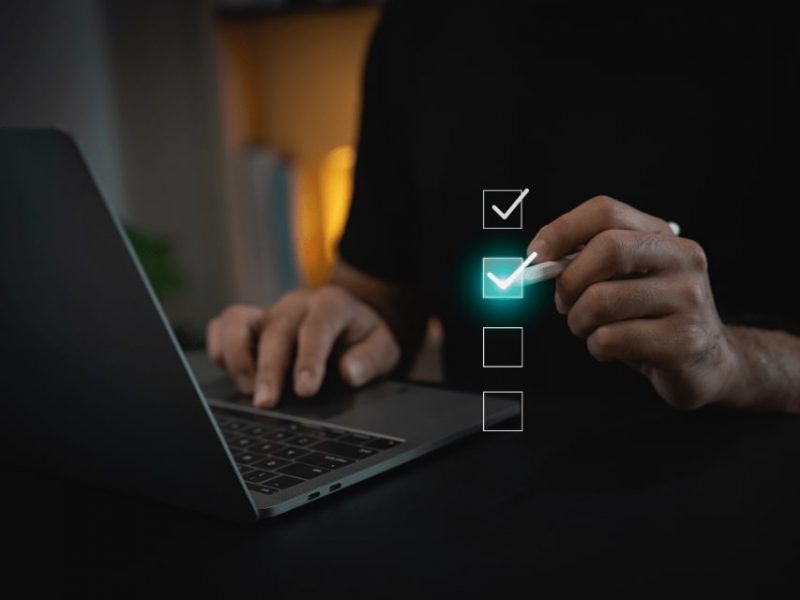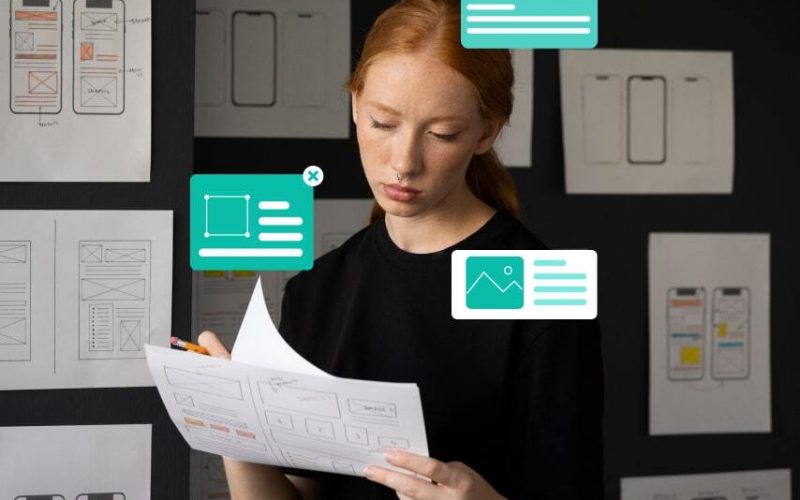Picture this: You’ve spent months perfecting your groundbreaking product. You’re convinced it’s going to revolutionize the market. You launch with fanfare, eagerly awaiting the flood of customers… only to hear crickets. Sound familiar? If you’re nodding your head, you might have skipped a crucial step in your product development journey: customer validation.
What Is Customer Validation?
Customer validation is a process used by businesses to verify that their product or service meets the needs and expectations of their target audience. This phase often follows product development and involves collecting and analyzing feedback from real customers. The goal of customer validation is to ensure that there is a genuine market demand for the product before investing further resources into its full-scale production and marketing.
Think of it as a reality check for your assumptions. You might think your app is the best thing since sliced bread, but does your target audience agree? Customer validation helps you answer that all-important question before you invest too much time and resources into a product that might not have a market.
But let’s dive a bit deeper. Customer validation isn’t just about getting a thumbs up or down from potential users. It’s a comprehensive process that involves:
- Validating the Problem: Confirming that the problem you think you’re solving actually exists and is significant enough for people to seek a solution.
- Validating the Solution: Ensuring that your product effectively addresses the problem in a way that resonates with your target audience.
- Validating the Market: Verifying that there’s a large enough group of people willing to pay for your solution.
- Validating the Business Model: Confirming that you can acquire customers at a cost that allows for a profitable and sustainable business.
Remember, customer validation is not a one-time event. It’s an ongoing process that continues throughout your product’s lifecycle, helping you stay aligned with your customers’ evolving needs and preferences.
Why Is Customer Validation Important?
Let’s be real: building a product is expensive, time-consuming, and emotionally draining. Customer validation is your safety net, ensuring you don’t pour your heart (and wallet) into something that won’t resonate with your audience.
Martin Oxley, previously managing director of BuzzBack Europe, stresses the importance of accessing customers’ underlying emotions and motivations rather than just their rational responses. This approach can be crucial in validating both the target customer and the problem they’re facing
Here’s why it’s absolutely crucial:
- Prevents Costly Mistakes
By validating your ideas early, you avoid wasting resources on features or products that don’t align with customer needs. Imagine spending months developing a feature only to find out that customers don’t care about it. Customer validation helps you avoid such pitfalls.
- Refines Your Value Proposition
Through feedback, you’ll understand what truly matters to your customers, helping you craft a compelling value proposition. You might discover aspects of your product that resonate more strongly with customers than you initially thought.
- Builds a Customer Base
The validation process often leads to early adopters who can become your biggest advocates. These early users can provide invaluable feedback and may even become brand ambassadors, helping to spread the word about your product.
- Attracts Investors
Solid customer validation data can be a powerful tool in convincing investors that your product has real market potential. Investors love to see evidence that there’s a market for your product before they commit their funds.
- Reduces Market Risk
By confirming market demand before full-scale development, you significantly lower the risk of market failure. This doesn’t mean you’ll always succeed, but it greatly improves your odds.
- Informs Product Development
Customer validation provides insights that can guide your product roadmap. You’ll learn which features to prioritize and which ones can wait.
- Optimizes Pricing Strategy
Through the validation process, you can gauge how much customers are willing to pay for your solution, helping you set the right price point.
- Improves Marketing Effectiveness
By understanding your customers’ pain points and how they perceive your solution, you can create more targeted and effective marketing messages.
Remember, even giants like Google have failed products (Google Glass, anyone?). Customer validation isn’t just for startups; it’s a crucial step for any new product or feature, regardless of the company’s size or reputation.
When You Need to Conduct Customer Validation
So, when’s the right time to start validating? The short answer: as early as possible. But let’s break it down:
- After Initial Concept Development: Once you have a clear idea of your product, start validating. Don’t wait until you have a fully developed product. The earlier you start, the less costly it is to make changes based on feedback.
- Before Major Investments: Planning to pour significant resources into development? Validate first. This could save you from investing in a product that doesn’t have market fit.
- When Entering New Markets: Even if your product is successful in one market, validate before expanding to new territories or demographics. What works in one market might not work in another due to cultural differences, local regulations, or varying customer needs.
- Before Adding New Features: Thinking of expanding your product’s capabilities? Validate the need for these features with your customers. Just because you think a feature is cool doesn’t mean your customers will find it useful.
- Regularly Throughout the Product Lifecycle: Customer needs evolve. Regular validation helps you stay aligned with your market. This could be quarterly, bi-annually, or annually, depending on how rapidly your market changes.
- When Facing Unexpected Challenges: If you’re experiencing issues like low adoption rates, high churn, or negative feedback, it’s time to re-validate your assumptions.
- Before a Major Pivot: If you’re considering a significant change in your business model or product direction, customer validation is crucial to ensure you’re moving in the right direction.
The key is to make customer validation an ongoing process, not a one-time event. Your product should evolve with your customers’ needs, and regular validation ensures you stay on track.
The Customer Validation Process: A Step-by-Step Guide
Ready to dive into customer validation? Let’s break it down into manageable steps:

1. Define Your Hypotheses
Start by clearly articulating your assumptions about your product and market. What problem does your product solve? Who are your target customers? What value do you think you’re providing?
Be as specific as possible. Instead of “Our product helps people save money,” try “Our budgeting app helps young professionals in urban areas save an average of 20% of their income each month.”
📌 Pro Tip: Not sure who your ideal customer is? Use Prelaunch’s Customer Persona to uncover deep insights about your audience and validate your assumptions with real data.
2. Create a Minimum Viable Product (MVP)
Develop a basic version of your product that includes just enough features to be usable by early customers. This could be a prototype, a landing page, or even a detailed mockup.
Remember, the goal of an MVP is to start the learning process, not to have a perfect product. It should be just good enough to test your core assumptions.
3. Identify and Reach Out to Potential Customers
Find people who fit your target customer profile. Use social media, networking events, or even cold outreach. Be creative in how you find these potential customers – attend industry events, join relevant online communities, or partner with complementary businesses.
Pro Tip: Use Prelaunch’s Customer Insights to gather and analyze real customer data effortlessly. Identify the right audience, track interactions, and capture valuable feedback—all in one place.
4. Conduct Customer Interviews
Have in-depth conversations with potential customers. Ask open-ended questions about their problems, needs, and how they currently solve the issue your product addresses.
Some key questions to ask:
- What’s the biggest challenge you face in [relevant area]?
- How do you currently address this challenge?
- What do you like and dislike about your current solution?
- If you had a magic wand, how would you solve this problem?
Remember, the goal is to listen more than you talk. Let the customer guide the conversation and be open to unexpected insights.
5. Test Your MVP
Let your potential customers interact with your MVP. Observe their reactions and gather feedback. Pay attention to both what they say and what they do – sometimes actions speak louder than words.
If possible, conduct usability tests where you ask customers to complete specific tasks with your MVP. This can reveal pain points or confusing aspects of your product that customers might not articulate in an interview.
6. Analyze Feedback and Iterate
Review the insights you’ve gathered. Look for patterns and surprises. Use this information to refine your product and business model.
Don’t just focus on the positive feedback. Negative feedback, while sometimes hard to hear, often provides the most valuable insights for improvement.
7. Verify Willingness to Pay
It’s not enough for customers to like your product; they need to be willing to pay for it. Test different pricing models and see how customers respond.
You can do this through various methods:
- Presales: Offer early bird pricing for customers willing to commit before the product is fully developed.
- Price testing: Present different price points to different customer segments and see how it affects conversion rates.
- Value metric testing: If you’re considering a tiered pricing model, test which features customers value most and are willing to pay extra for.
Pro insight: One of the ways entrepreneurs find Prelaunch concept validation platform most useful is the price testing feature, which allows you to find the optimal price cap for your product.
8. Document Your Learnings
Keep detailed records of your validation process. This will be invaluable for future product iterations and can be a powerful tool when pitching to investors.
Create a “validation board” where you track your hypotheses, the tests you’ve run, and the results. This visual representation can help you see how your understanding of your market and product has evolved over time.
Case Studies and Examples
Let’s look at some real-world examples of customer validation in action:
CIGA Design: Validating with a Landing Page
CIGA Design — an award-winning Chinese watch manufacturer — successfully launched a number of crowdfunding campaigns on Indiegogo. Two of those crowdfunded campaigns — the Black Hole from the U Series and the Eye of Horus from the X Series — were successfully validated with Prelaunch landing pages. However, the product didn’t exist yet. When people clicked to sign up, they were told the product was in development and were asked to leave their email.

The Prelaunch reserve funnel also went a step further, by offering those interested to reserve the product at a special discounted price. This approach allowed CIGA Design to validate both interest in their product idea and willingness to pay, all before investing any resources into development.
These examples show that customer validation doesn’t have to be complex or expensive. It’s about finding creative ways to test your assumptions and learn from potential customers. The key is to start small, focus on learning, and be willing to adapt based on what you discover.
Dropbox: The Power of a Simple Video
Before building their product, Dropbox created a 3-minute explainer video demonstrating their concept. They posted it on Hacker News and saw their beta signup list go from 5,000 to 75,000 overnight. This video validated their idea and helped them secure funding.
What made this approach so effective was its simplicity. Instead of spending months developing a full product, they created a simple video that effectively communicated their value proposition. This allowed them to gauge market interest with minimal investment.
Zappos: The Wizard of Oz Technique
Zappos founder Nick Swinmurn tested his online shoe store idea by putting up photos of shoes from local stores. When an order came in, he’d buy the shoes from the store and ship them. This allowed him to validate customer interest without investing in inventory.

This approach, often called the “Wizard of Oz” technique, involves manually fulfilling a service that you eventually plan to automate. It’s a great way to test market demand without building a full product.
Closing Thoughts
Customer validation isn’t just a step in the product development process; it’s a mindset. It’s about staying curious, being open to feedback, and continuously learning from your market. By making customer validation a core part of your product strategy, you’re not just building a product; you’re building a product people actually want and need.
Remember, the goal isn’t to avoid failure completely – that’s impossible in the dynamic world of startups. The goal is to fail fast, learn quickly, and adapt. Customer validation gives you the tools to do just that.
Here are some key takeaways:
- Start early: Don’t wait until you have a perfect product. The earlier you start validating, the less costly it is to make changes.
- Be open to surprises: Sometimes the most valuable insights come from unexpected places. Be prepared to challenge your assumptions.
- Focus on learning: The goal of customer validation isn’t to prove yourself right, but to learn what your customers truly need and want.
- Iterate continuously: Customer validation isn’t a one-time event. Make it an ongoing part of your product development process.
- Use the right tools: Platforms like Prelaunch can streamline your customer validation process, helping you gather and analyze customer data more effectively.
- Don’t just listen, observe: Pay attention to what customers do, not just what they say. Actions often speak louder than words.
- Be willing to pivot: If the data suggests your initial idea isn’t resonating, be prepared to change direction.
So, before you pour your heart and soul (and funding) into your next big idea, take a step back and validate. Your future self (and your investors) will thank you. Remember, in the world of product development, understanding your customer isn’t just important – it’s everything.
FAQs
What is the difference between customer validation and customer discovery?
While closely related, these are distinct stages in the Customer Development model:
- Customer Discovery is about understanding the problem you’re solving and who has that problem. It’s the process of testing your initial hypotheses about your market and product.
- Customer Validation comes next. It’s about verifying that you have a solution that customers want and are willing to pay for. It involves testing your MVP and refining your sales and marketing approach.
Think of customer discovery as finding the lock, and customer validation as ensuring your key fits perfectly.
How long does the customer validation process take?
The duration can vary widely depending on your product, market, and resources. It could take anywhere from a few weeks to several months. Some factors that can influence the timeline include:
- Complexity of your product
- Size and accessibility of your target market
- How quickly you can iterate on feedback
- Resources available for the validation process
The key is to move quickly and iterate often. Remember, it’s better to spend a few extra weeks validating than months or years building the wrong product.
Can customer validation be applied to any type of product?
Absolutely! Whether you’re developing a physical product, a software solution, or a service, customer validation is crucial. The specific techniques might vary (for example, you might use 3D printed prototypes for physical products and interactive mockups for software), but the principle of validating your assumptions with real potential customers applies universally.
Here are some examples of how customer validation might look for different types of products:
- Physical Products: Use prototypes or mockups to get feedback on design and functionality. 3D printing has made this process much more accessible for hardware startups.
- Software: Create wireframes or interactive prototypes to test user experience and feature sets. Tools like InVision or Figma can be very helpful here.
- Services: Role-play service delivery or create detailed service blueprints to walk potential customers through the experience.
- B2B Products: Conduct pilot programs with a small group of businesses to test your solution in real-world scenarios.
The most successful companies make customer validation an ongoing process, continuously checking in with their market to ensure they’re on the right track. So, no matter what you’re building, make customer validation your secret weapon for success!
How do I know if I’ve done enough customer validation?
This is a great question, and the answer can be a bit nuanced. Here are some signs that you’ve done thorough customer validation:
- Consistent Feedback: You start hearing the same things from different customers, indicating you’ve reached a point of saturation in your research.
- Clear Product-Market Fit: You can clearly articulate who your customer is, what problem you’re solving, and how your solution is unique.
- Predictable Sales Process: You have a repeatable process for acquiring customers, and you understand the key factors that influence their decision to buy.
- Positive Unit Economics: You can acquire customers at a cost that allows for a profitable business model.
- Customer Enthusiasm: You have a group of early adopters who are not just using your product, but actively advocating for it.
Remember, customer validation is an ongoing process. Even when you’ve achieved these milestones, continue to check in with your market regularly to stay aligned with evolving needs and preferences.
What if my customer validation results are negative?
Negative results can be disappointing, but they’re actually incredibly valuable. Here’s how to approach negative customer validation results:
- Don’t Panic: Negative results don’t necessarily mean your idea is bad. They mean you’ve learned something important that can guide your next steps.
- Analyze Deeply: Look closely at why the results were negative. Was it the product itself, the pricing, the target market, or something else?
- Iterate: Use the insights you’ve gained to refine your product or pivot your approach. Maybe you need to target a different market segment or adjust your value proposition.
- Retest: After making changes based on your learnings, conduct another round of validation to see if you’ve addressed the issues.
- Consider Pivoting: If after multiple iterations you’re still getting negative results, it might be time to consider a more significant pivot or even a new idea altogether.
- Learn from the Process: Even if you decide to abandon this particular idea, the insights you’ve gained about your market are invaluable for future ventures.
Remember, many successful products evolved significantly from their original concept based on customer validation results. Negative feedback early on can save you from bigger failures down the line and guide you towards a product that truly resonates with your market.




